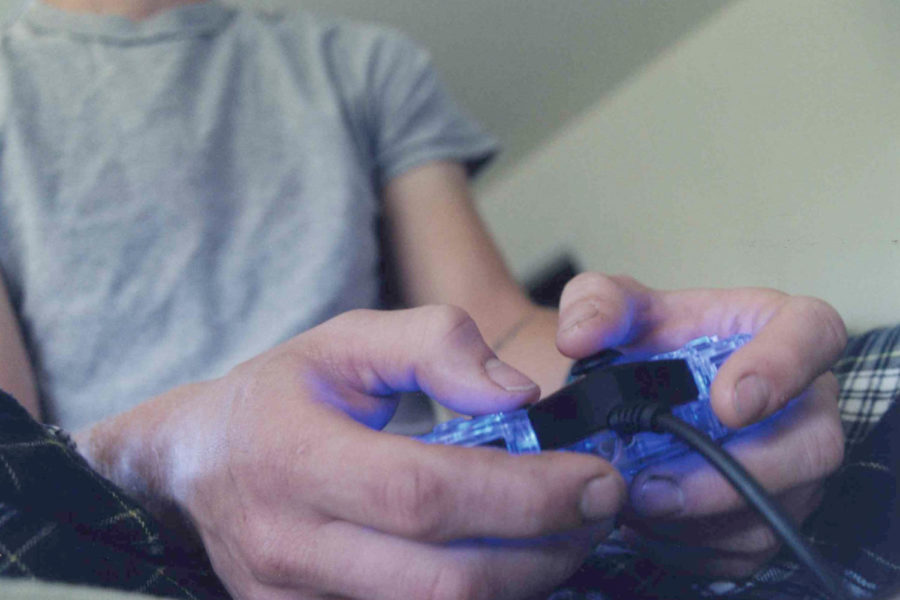Ward: Media violence numbs audience
The recent rise in school shootings around the nation has sparked controversy over what should and shouldn’t be done, as well as the role violent media and gaming has played.
November 3, 2014
When I first heard about the Marysville Pilchuck High School shooting, I was sitting in my 2:10 Friday class, and I got the alert on my laptop. Class hadn’t started yet, so I read the headlines of the story and began to inform those sitting around me, because that was the ethical thing to do.
The shooter’s name was Jaylen Fryberg, a popular freshman who only a week prior had been named Homecoming Prince. Fryberg shot five specific targets, two of who were his own cousins. He took the life of one girl at the scene and then turned the .40 caliber Beretta on himself.
After I finished my brief synopsis of the breaking news, the reaction I got from one or two of my peers out of a lecture hall of 200 was “Another one?” or “That’s unfortunate.” Then they continued on with whatever they had been talking about before I brought up the tragedy.
This reaction sparked a question in my mind: How on earth could we be so numb to situations like this? Granted this is not the first time in our lives, nor will it be the last, that we will hear about or be personally affected by events like these, but that does not mean that we shouldn’t have a reaction. Is this generation truly so unaffected by violence because of repeated exposure to violent acts on television and through other mediums?
Statistics presented by the American Academy of Pediatrics show that children between the ages of 2 and 18 watch an average of three hours of television a day. During early childhood, children are more likely to be placed in front of a cartoon. This same research says that in an hour of cartoons, children are exposed to 20 different acts of violence. This number really adds up so that children will have seen around 16,000 simulated murders and about 200,000 simulated acts of violence by the age of 18. Hearing statistics like this clearly adds some justification to the idea that children and teens across the country are becoming desensitized to violence.
Cartoons are generally associated with innocence and joy among children, which is why they are exposed to them at such high levels. This could also be why more and more children, rather than being negatively impacted, are starting to identify with violent acts due to their friendly exterior. Research conducted by Nielsen Media indicates that younger children have a hard time differentiating between what is real and what they see — it would not take much for a child to begin to perceive violence as a normative experience.
This same idea can also be applied to ever popular video games. We live in a digital age full of screens and pixels, and spending time in a virtual reality is now an American pastime. But video games are also having a huge impact on the amount of exposure to violence.
A 2006 ISU study conducted by Nicholas Carnagey, former psychology instructor, Craig Anderson, distinguished psychology professor, and Brad Bushman, former psychology professor, tried to discover a correlation between violence in video games and violence in the real world. The results found that students who played 20 minutes of a violent video game and who then watched footage of a real violent act did not show signs of an elevated heart rate. Those that played a nonviolent video game and then watched the violent footage did. This research directly linked the two and stated that violent video games do have an impact on how you perceive the severity of a violent act.
You must keep in mind that this was just a 20-minute observational period, and there was an evident link. Think about those that sit for hours on end, digitally decapitating opponents and setting off bombs. Many do this at least a little every day. Think about how much desensitization those individuals must be experiencing and where it could potentially lead.
All of this information is not my way of saying that anyone who plays violent video games will turn into a serial killer. That is neither logical nor probable. However, rates of school shooting are significantly more likely to take place as we continue to be exposed to these high levels of violence as children, teenagers and adults. We will begin to anticipate these kinds of crimes and no longer perceive them as anything out of the ordinary which wrong.
In a research report published by Bushman and Anderson, they show a flowchat indicating where we are heading if this level of exposure continues. The chart begins with exposure to media violence which then leads to no longer having an instinctive fear reaction. This results in things like underestimating the severity of an injury, decreased sympathy for victims of violence and lowered negative reactions to violence as a whole.
Right now we still recognize the Marysville shooting as a tragedy. However, it does not take much stretch of the imagination to wonder if down the road when our generation, the children of the media world, are grown and running things, we will simply begin to truly expect what used to be considered the unexpected.







